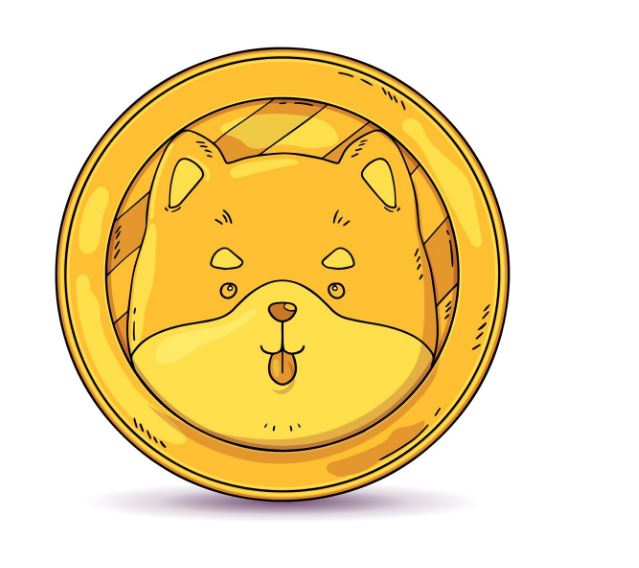
In the swiftly advancing realm of cryptocurrencies, meme coins have emerged as a notably intriguing and contentious phenomenon. What commenced as a whimsical internet jest has subsequently transformed into a multi-billion dollar industry, drawing in investors, traders, and celebrities alike. What precisely constitutes a meme coin, and what is its operational mechanism within the fluctuating cryptocurrency market? Let us examine the emergence, allure, and possible drawbacks of these frequently fanciful digital assets.
Meme coins represent a distinct category of cryptocurrencies, primarily developed as humorous or experimental ventures, yet they frequently possess the potential for substantial profits—albeit accompanied by considerable risks. In contrast to conventional cryptocurrencies such as Bitcoin or Ethereum, which possess distinct use cases and technological underpinnings, meme coins predominantly flourish through community enthusiasm, social media trends, and viral phenomena. Investors are frequently attracted by the humor, cultural allusions, or celebrity endorsements that drive the expansion of these cryptocurrencies.
| Meme Coin | Creation Date | Market Cap (2025) | Creator(s) | Notable Influence |
|---|---|---|---|---|
| Dogecoin | December 6, 2013 | $62 billion | Jackson Palmer, Billy Markus | Endorsed by Elon Musk, community-driven |
| Shiba Inu | August 1, 2020 | $8.2 billion | Ryoshi (Anonymous) | Known as the “Dogecoin Killer” |
| Pepe Coin | August 2021 | $3 billion | Anonymous | Based on the Pepe the Frog meme |
| TrumpCoin | January 2025 | $27 billion | Donald Trump (and supporters) | Political meme fueled by Trump’s campaign |
Meme Coins: Originating from Digital Culture
The notion of meme coins originated with Dogecoin, a cryptocurrency introduced in 2013 as a satire of the rapidly expanding digital currency landscape. Dogecoin, inspired by the viral “Doge” meme depicting a Shiba Inu, was originally conceived as a humorous jest. However, it rapidly garnered popularity, primarily owing to the fervent online community it drew, and the subsequent developments are well-documented.
Subsequently, various meme coins emerged, emulating Dogecoin, such as Shiba Inu, Pepe Coin, and Fartcoin. These coins, frequently inspired by popular memes or cultural references, leverage internet culture and humor to attract attention. Meme coins, in contrast to conventional cryptocurrencies, exhibit minimal technical innovation or practical utility, depending primarily on generated enthusiasm and community-driven backing. It resembles the internet’s manifestation of “groupthink”—the greater the participation, the more value these coins can attain.
The Functionality of Meme Coins: The Influence of Hype
Meme coins operate similarly to other cryptocurrencies, as they are founded on blockchain technology. Nonetheless, their worth does not arise from any intrinsic technology or application. Meme coins are driven by speculation, media hype, and viral trends.
Meme coins are frequently compared to “pump and dump” schemes, as they experience rapid inflation driven by speculation, followed by a swift decline when the enthusiasm wanes. They are propelled by community involvement and social media dynamics, with price escalations frequently instigated by viral content, celebrity endorsements, or fashionable hashtags. Investors, motivated by FOMO (fear of missing out), engage in the market, only to confront the unavoidable decline when the enthusiasm wanes.
The Appeal of Meme Coins: Amusement and Financial Investment
Meme coins present a distinctive combination of humor and high-risk investment potential, rendering them highly attractive to younger, technologically adept investors. A multitude of individuals invest in meme coins not solely for financial gain but to engage in a broader cultural phenomenon. For many, the thrill of engaging in a fashionable trend is equally significant as the monetary gain.
Consider Dogecoin, for example. Initially conceived as an entertaining experiment, it has evolved into a cryptocurrency of substantial market importance, boasting a market capitalization comparable to that of prominent corporations. Meme coins such as Shiba Inu and Pepe Coin exemplify the fusion of internet culture with digital investments, establishing a novel asset class that is both volatile and exhilarating.
In recent years, the popularity of meme coins has escalated, characterized by significant price increases and viral online communities supporting them. They provide an opportunity to engage in cryptocurrency at a reduced cost relative to more established currencies. Although their long-term outlook may be ambiguous, the opportunity for rapid gains has rendered them a preferred option for speculative traders.
Is Investing in Meme Coins Advisable? Risks and Benefits
Meme coins are frequently condemned for their absence of utility and intrinsic risk, and justifiably so. The worth of these digital assets is predominantly speculative, lacking substantial support beyond the conviction and fervor of their community. While certain investors have realized significant profits, others have witnessed their investments dissipate equally swiftly.
Principal Risks Associated with Meme Coins:
- Significant volatility: The prices of meme coins can vary dramatically, primarily influenced by social media trends or celebrity endorsements.
- Pump-and-dump schemes: Numerous meme coins experience swift increases in value, succeeded by significant declines as the excitement diminishes.
- Absence of intrinsic value: In contrast to conventional cryptocurrencies with established use cases, meme coins frequently lack foundational technology or business applications to substantiate their worth.
Meme coins are frequently associated with fraudulent activities, such as pump-and-dump schemes and rug pulls, wherein creators abandon the project following its promotion.
The Future of Meme Coins: Permanent Fixture or Temporary Trend?
The future of meme coins is highly uncertain, and their emergence may reflect the speculative characteristics of cryptocurrency overall. Although their community-oriented characteristics render them uniquely attractive, potential investors should exercise caution when considering these assets. The market is saturated with meme coins that possess minimal intrinsic value, and the long-term sustainability of these coins is dubious.
Nonetheless, meme coins have undeniably impacted the cryptocurrency sector. They have emphasized the significance of social media and community involvement in enhancing the value of digital assets. As an increasing number of influencers and public figures endorse meme coins, their influence may continue to expand, though in an unpredictable and volatile fashion.
The Meme Coin Phenomenon—Risk versus Reward
Meme coins are highly volatile and speculative investments, yet they signify a developing trend in the cryptocurrency market. For some, they provide an enjoyable and interactive means of engaging with the digital currency sector, whereas for others, they signify a high-risk wager in an erratic market. The longevity of meme coins as either a transient phenomenon or a lasting element in the cryptocurrency landscape is yet to be determined.
